and the distribution of digital products.
DM Television
Mind Mapping “How to Do Great Work”: My Take on Paul Graham's Essay (Part One)
I absolutely love Paul Graham's style. I can't boast about knowing all of his essays by heart, but there are a few of my favorites, and I'm overwhelmed by the amount of wisdom he manages to put into each paragraph.
\ Recently, I stumbled upon one of his long reads – “How to do great work.” Reminding me of “You and your research” by Richard Hamming, the essay covers a broad set of topics which made my head spin when I tried to grasp it. I read it 10 times and still couldn't feel that the knowledge had settled in my head.
\ Luckily, I discovered the newsletter by Jason Chen where 60,000 characters have been distilled into a simple and powerful mind map. But something was still off – a few key pieces from the original article were missing. The mind map was a step in the right direction, but I needed it to be more bespoke to work for me.
\ So, feeling inspired, I decided to build my own detailed and structured map, which you can find here. In this two-part article, I'm sharing my reflections and favorite pieces from each part of the essay. I initially planned to put everything in a single text, but split it in half instead. Here's the first part: Finding a field and progressing in it and learning and cultivating the Habits of great work.
\ If you liked this article, I highly recommend spending time reading the original slowly and thoughtfully and using the mindmap later as a reference.
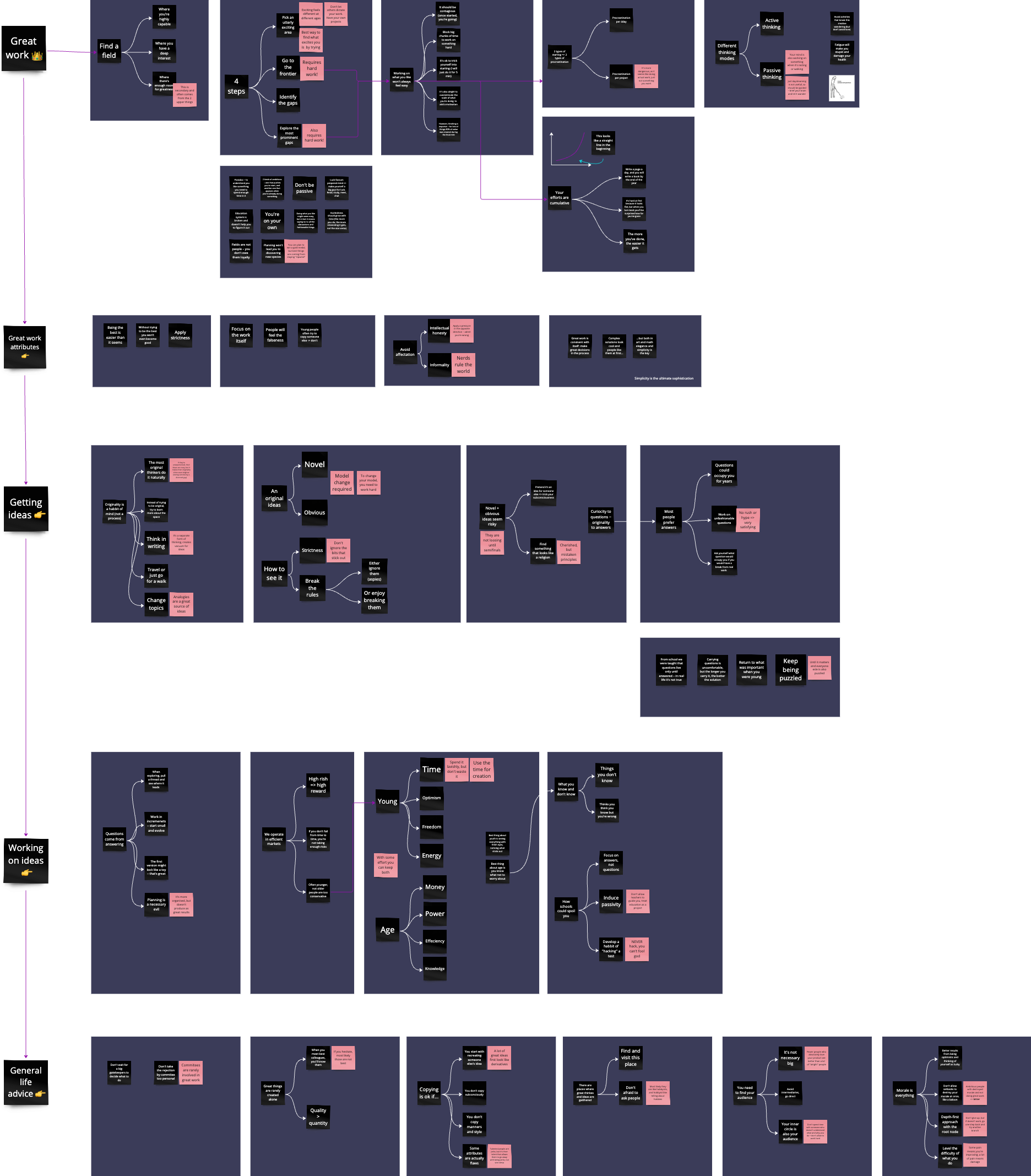
The essay opens with Paul's reflection on what great work is and what the pre-conditions for it are. He shares that it should be something you're naturally good at, ambitious about, and the area itself provides enough room for greatness. So, the next obvious question is how to find this magical combination.
4-Step Process to Achieve GreatnessPaul provides a very straightforward process to apply to anything, provided that you're feeling curious enough to bother. It's reiterated a few times, in the first few paragraphs and later, that the best way to start applying this process is to pick an area of curiosity and start making progress. One of the most sobering thoughts is that no one will tell you what to work on – you are on your own, and the main person in charge.
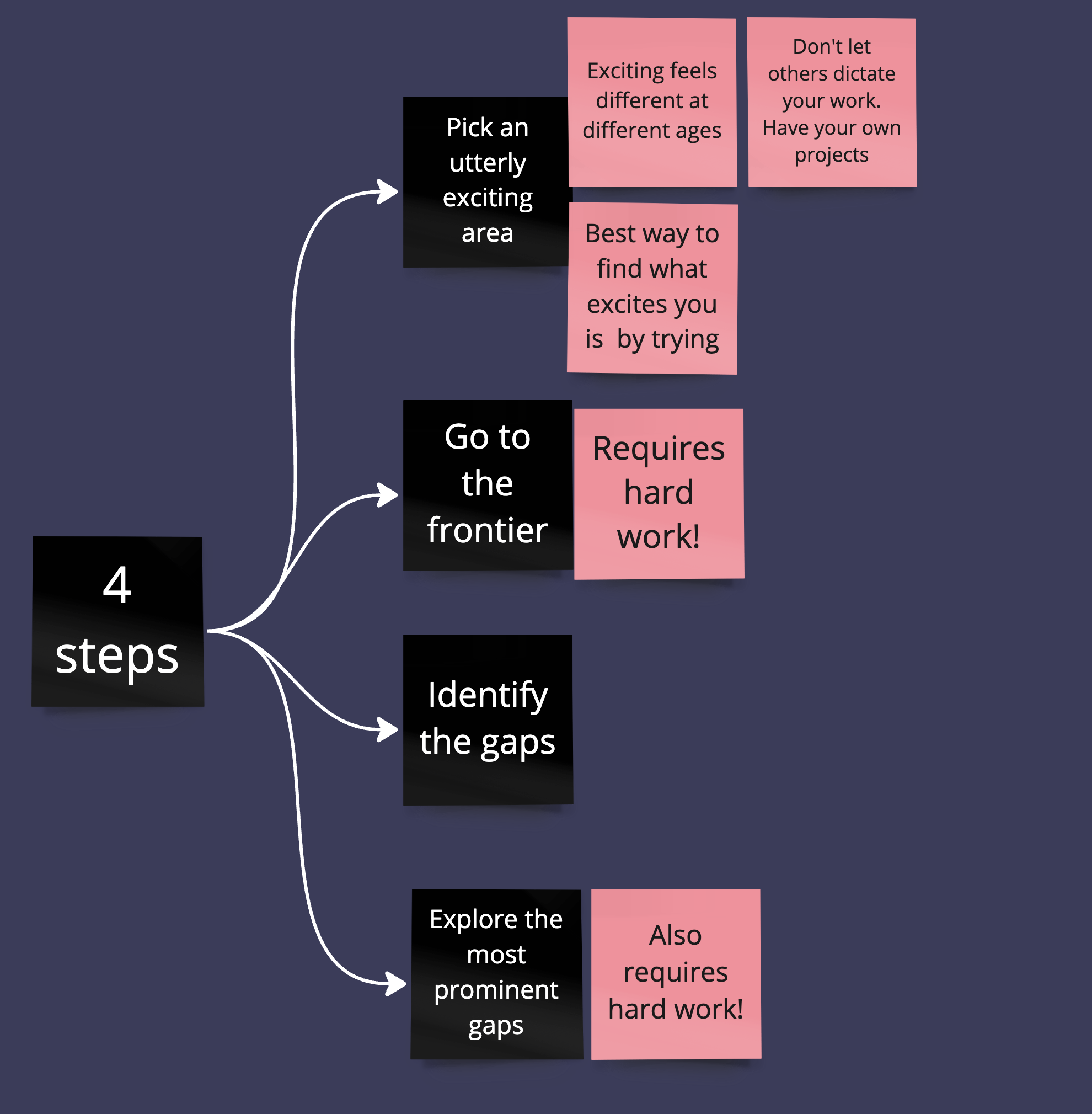
What follows next are reflections on how to make consistent progress in interesting areas because even something you're good at and generally enjoy doing will require hard work and include highs and lows.
\ I was particularly encouraged by the thoughts on the compound nature of any work and the importance of investing regularly, even if it's a small investment of time or money. The idea of making little incremental steps that stack up is trivial but hard to follow in reality. The reason it's so hard to keep up is that any exponential growth, in the beginning, looks like a straight line – you do things, and for a long time, it looks like nothing is moving forward, but the more you do, the steeper the slope and the easier it is to make progress.
\ Paul also warns that since consistent effort is really important, procrastination and gaps in consistency are a threat. He distinguishes two types of procrastination – not progressing on a given day and not progressing in your area of interest in general. The latter is more dangerous, as it's harder to detect and quite often hides behind the mask of real work.
\ I'm trying to build a habit of writing, yet it took me a few months to publish this article because I was busy in other areas of my life, and it always seemed like a good excuse.
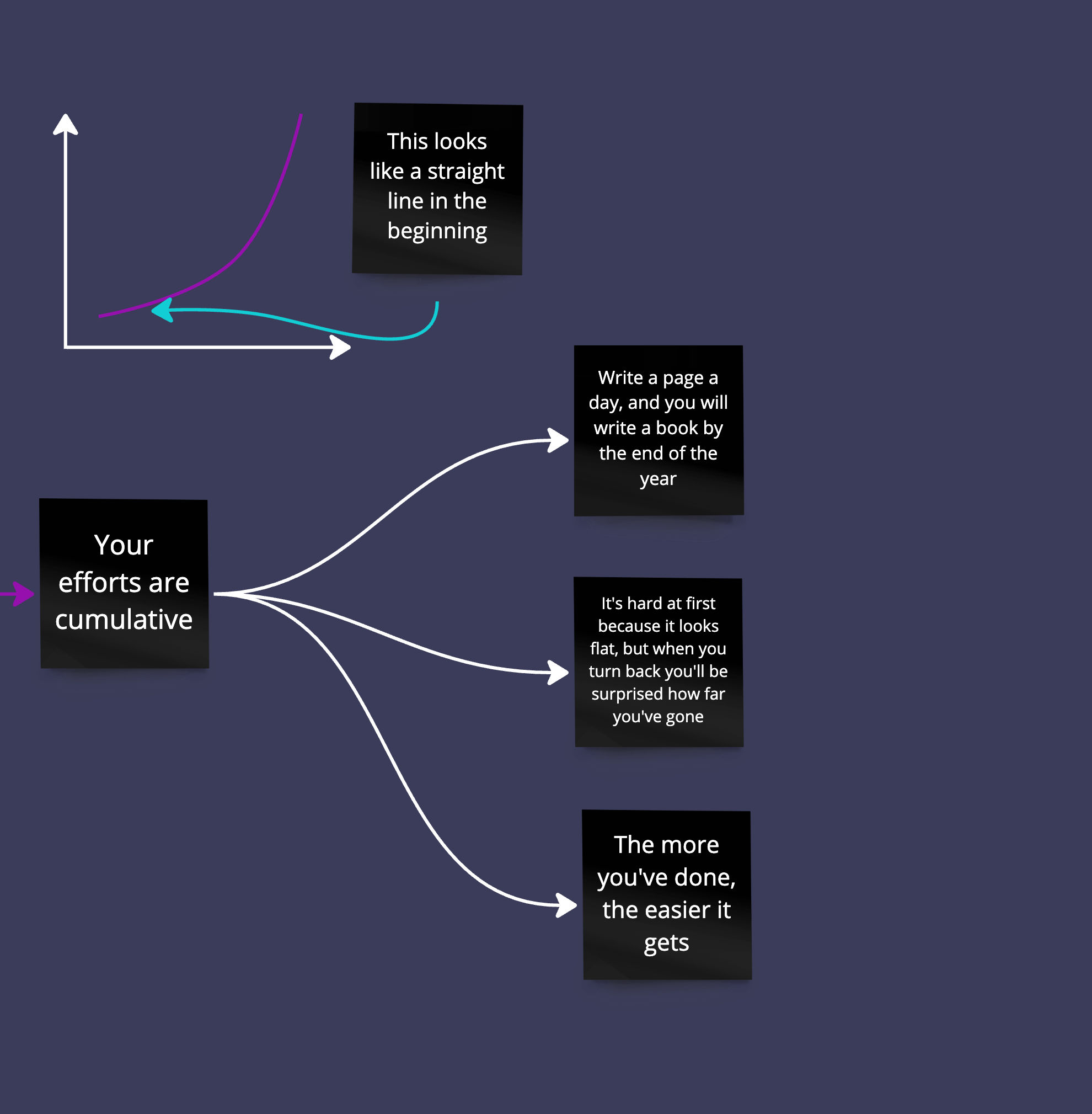
The paragraph about taking a break is a good reminder for hard workers who are easily carried away with work and end up exhausting their bodies and brains. Paul points out that your mind is a complicated device, and you can't just kick it 24/7 to produce greatness. Yes, you will make some progress, but you will also burn out and the quality will suffer, so you'll have to take a few steps back to fix the mistakes and recover.
\ Hence, it's quite important to reserve time for recharging and also allow for creative wandering – walk and do nothing to allow your brain to operate in a different mode and make connections.
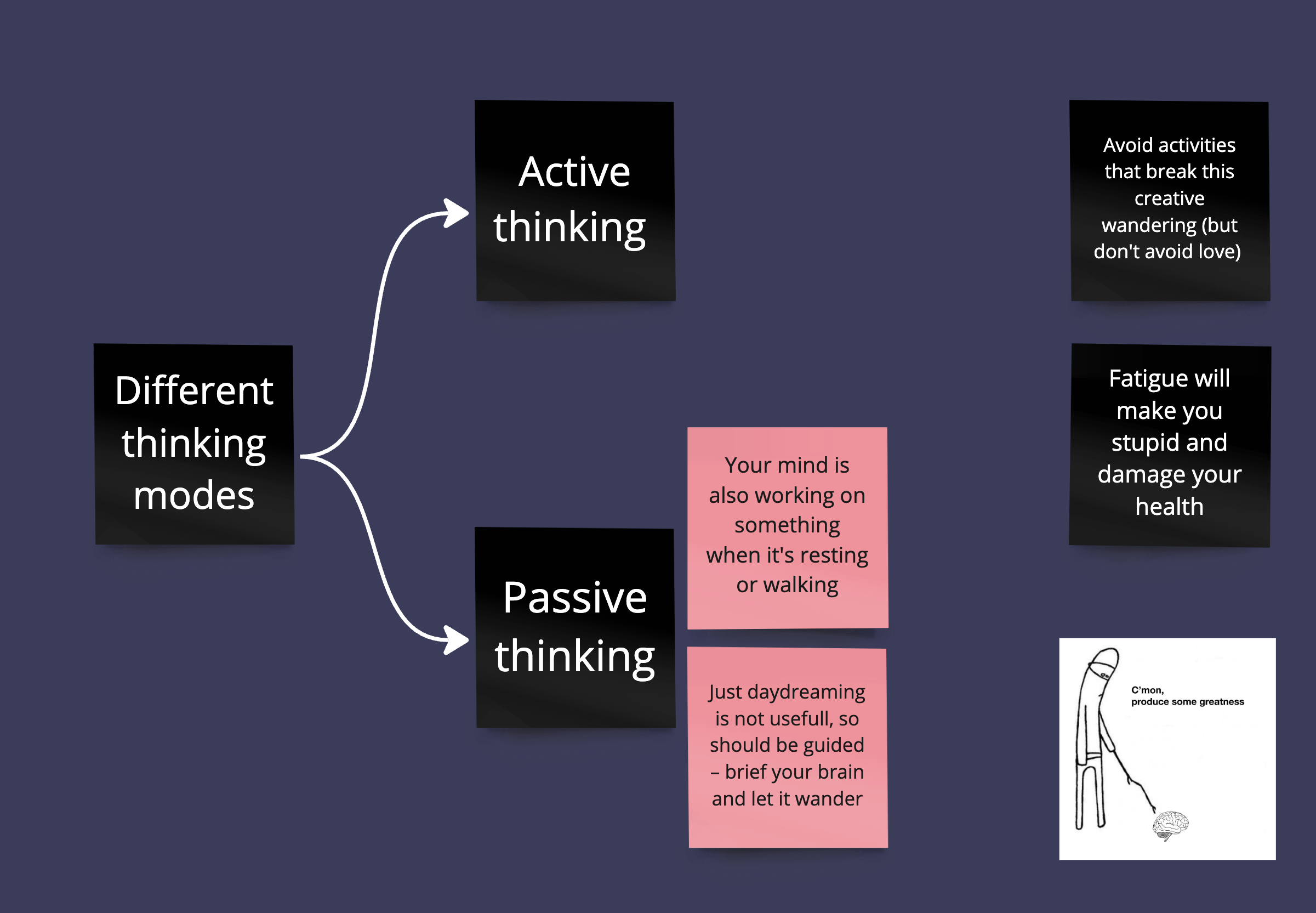
Finally, Paul points out that even if you've picked a field you love and started investing in it consistently, it doesn't mean your level of motivation will remain permanent. So, when you are feeling low, it's okay to “trick” yourself by saying you'll just spend a few minutes working on something. Next thing you know, if the field you're working on is really engaging for you, you will find yourself an hour or two later completely losing track of time and making good progress.
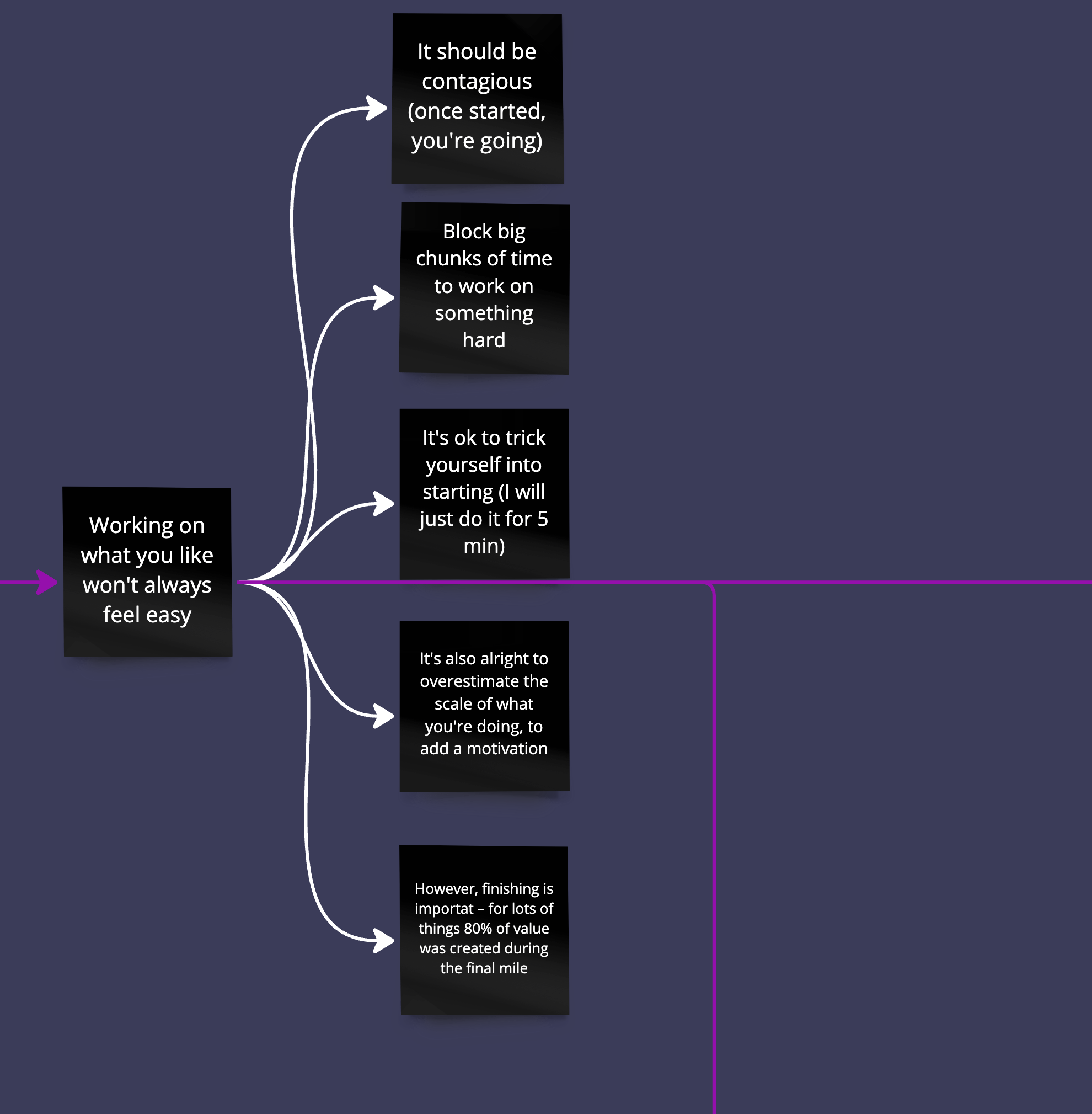
The next big chunk of the article describes how to probe if the work you are doing is really great, and how to keep the “greatness” bar always high. Some lucky people have these high standards built in, but I think Paul makes it clear what to focus on for building the habits for anyone.
Aim to Be the Best, Not ”The Rest”It's easy to be inspired by great visionaries and innovators and tell yourself you're going to only deliver the best, but then life happens – you find yourself tired and slipping into a “good enough” attitude. According to Paul, what matters is exactly the attitude: you shouldn't be discouraged if you miss the standard that you set for yourself, but if you don't aim high again, you won't even do okay in the end.
\ That reminded me of the point Marc Andreessen made on the Silicon Valley phenomenon (from 31:25 in this podcast) – peer pressure pushes people forward, and they can't help but match the high standards with their products.
\ The useful thing to help you in the absence of peer pressure is strictness – your inner voice that often tells you if you did great or not. It's important to stop, listen to this voice, and try to be just a tiny bit better today. The more you listen to it, the easier it gets.
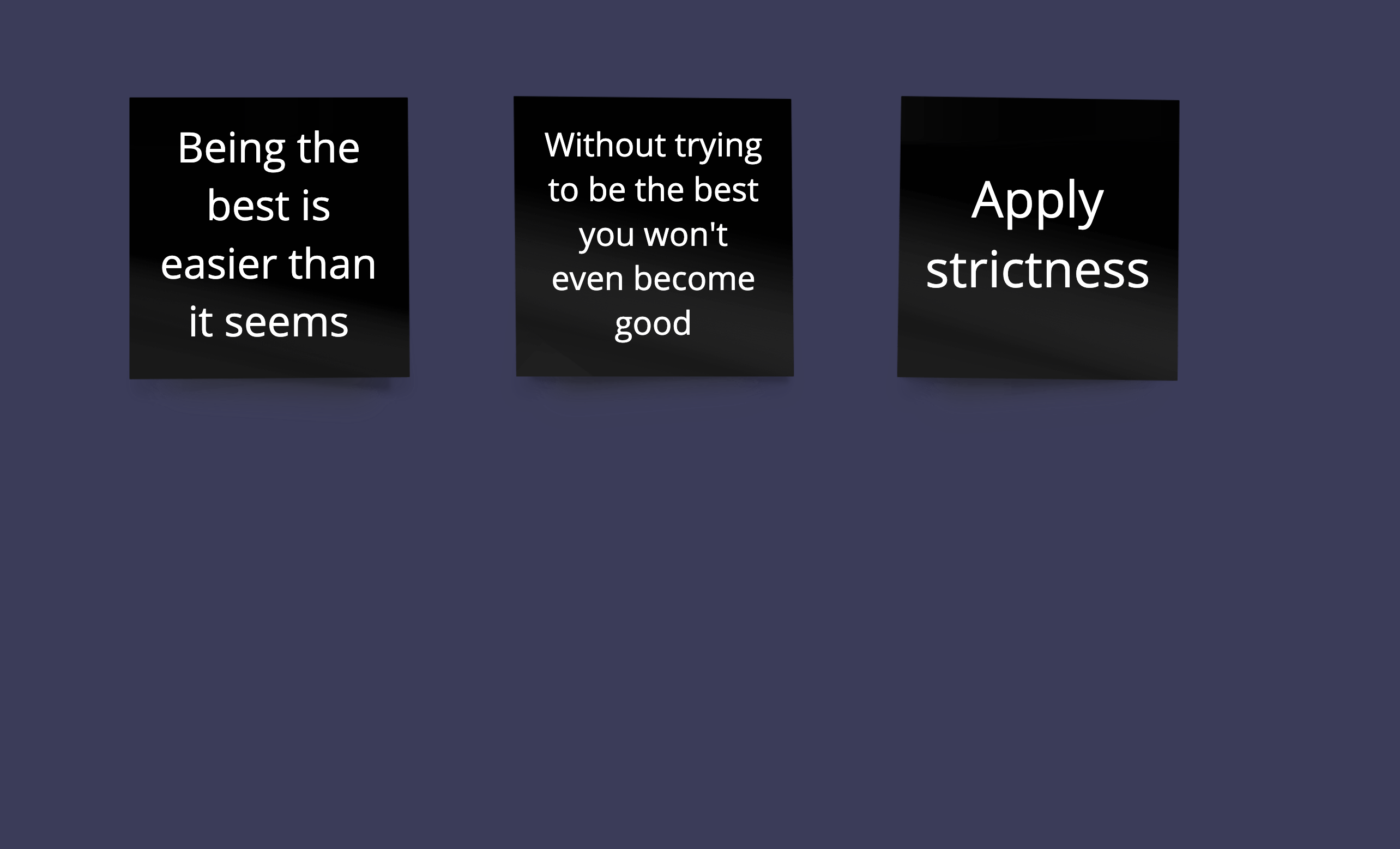
The paragraph on copying is quite interesting because looking up to someone and trying to mimic their behavior seems like a pretty good tactic named “fake it till you make it.” Paul writes a lot more on the danger of blindly copying in the following paragraphs, but here, he lands a very important thought – trying to mimic a style requires effort, yet it's still going to feel fake in the end.
\
So, save your effort and channel it instead into perfecting the work itself. After making the work stand out, the original style and all the cool things will follow naturally. 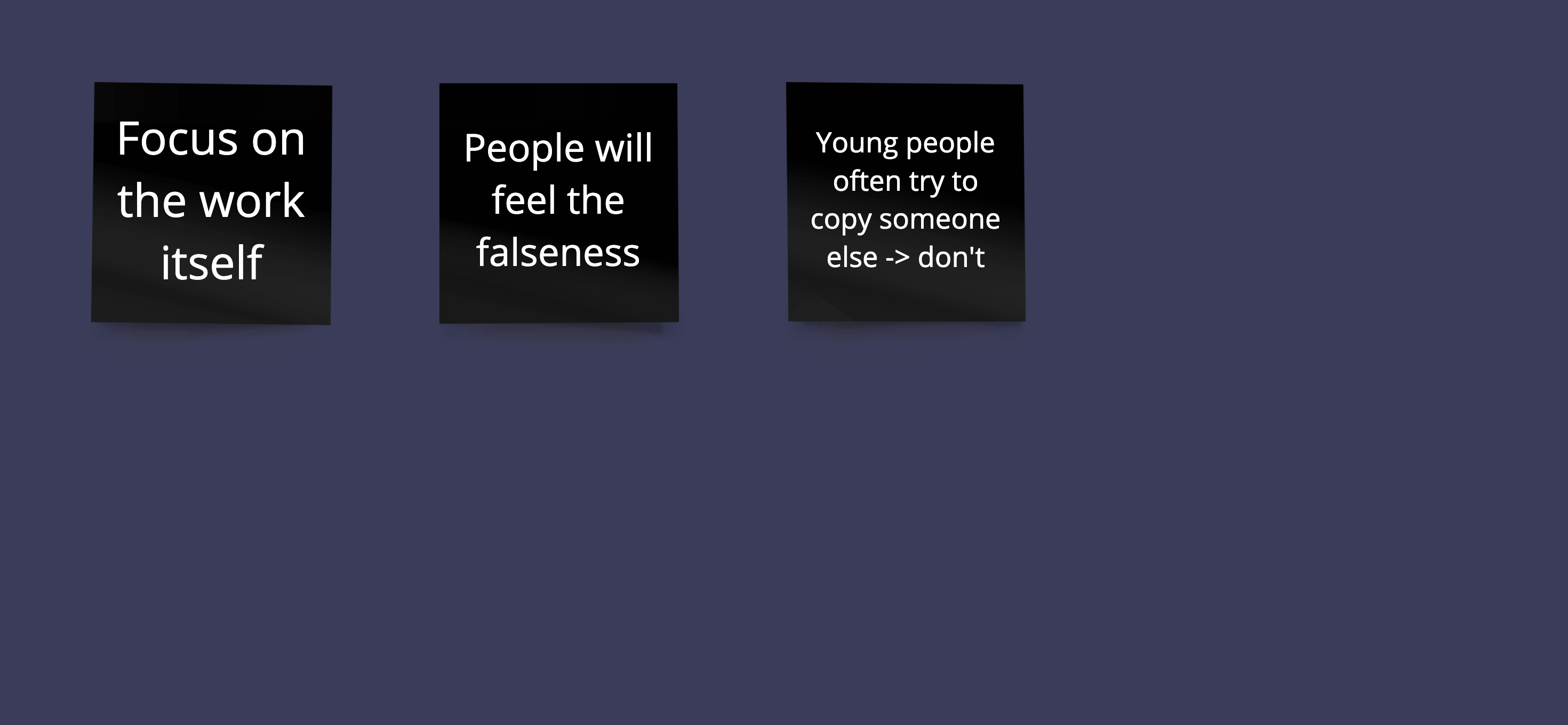
Being earnest is the opposite of being fake, so it's almost the other half of the previous habit.
\ The first key thing for being earnest is to start noticing the moments when you are not quite sincere with yourself, and maybe even assume that there are more moments like this even if you don't notice them. That's what is defined as intellectual honesty – being ready to question yourself and put yourself under scrutiny more often.
\ The second component is to embrace your inner nerdiness – partially because suppressing it and trying to conform will require energy you might otherwise put into making your work great.
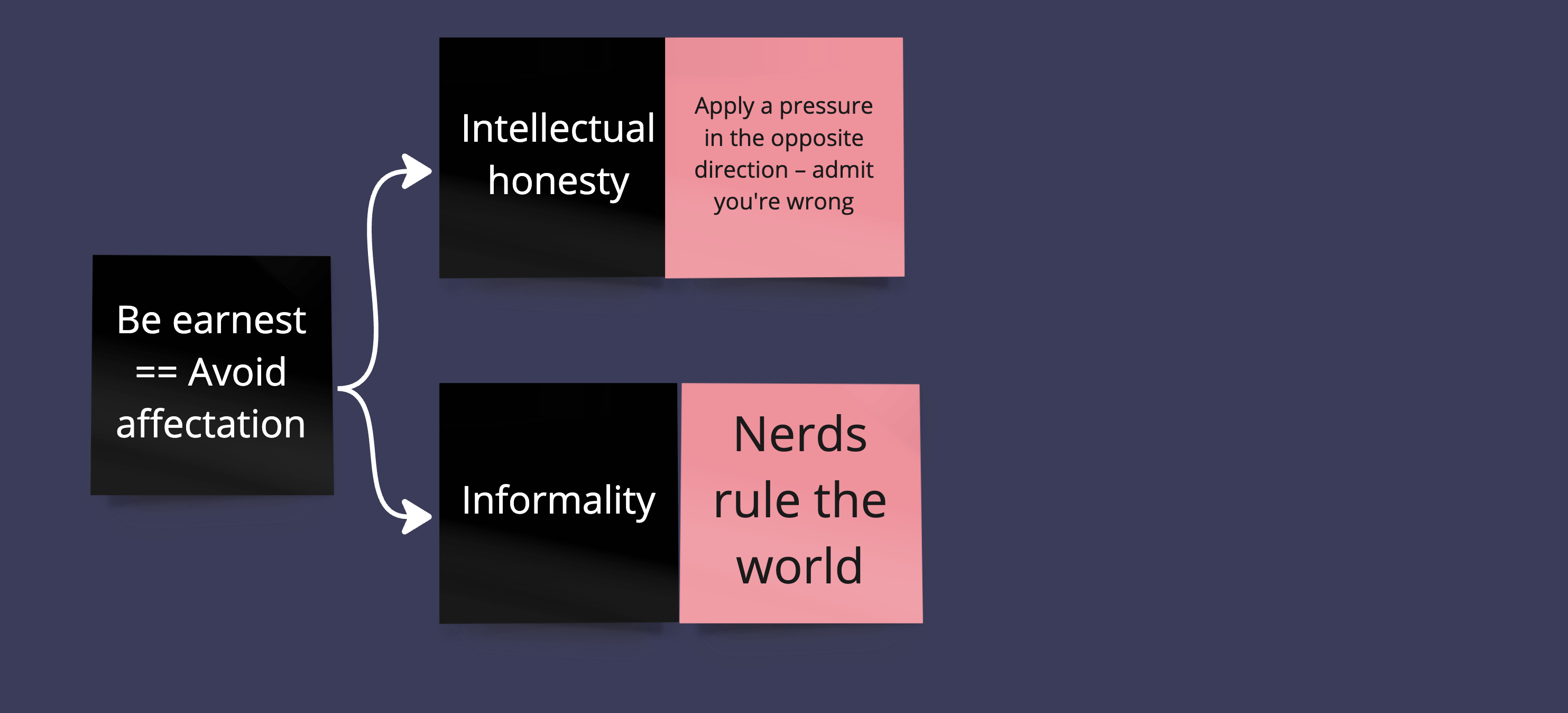
The idea of simplicity resonated most with me in this paragraph. I often find myself annoyed by things made more complex than they should be (normally it happens when lots of systems have to integrate together, like in programmable messaging or fintech), and asking if it could be simplified and reduced. Paul's evidence from math and art made me feel better because he also states that being powerful and flexible shouldn't be complicated.
\ Another great thought from this paragraph is consistency – to create a piece of great work, you need to make quite a few incremental steps, and each one of them should be great. So, even if it's tempting to rush through something and keep it in a “whatever” state, the better approach would be to have a few more iterations until it really matches the standards you set for yourself in this whole project.
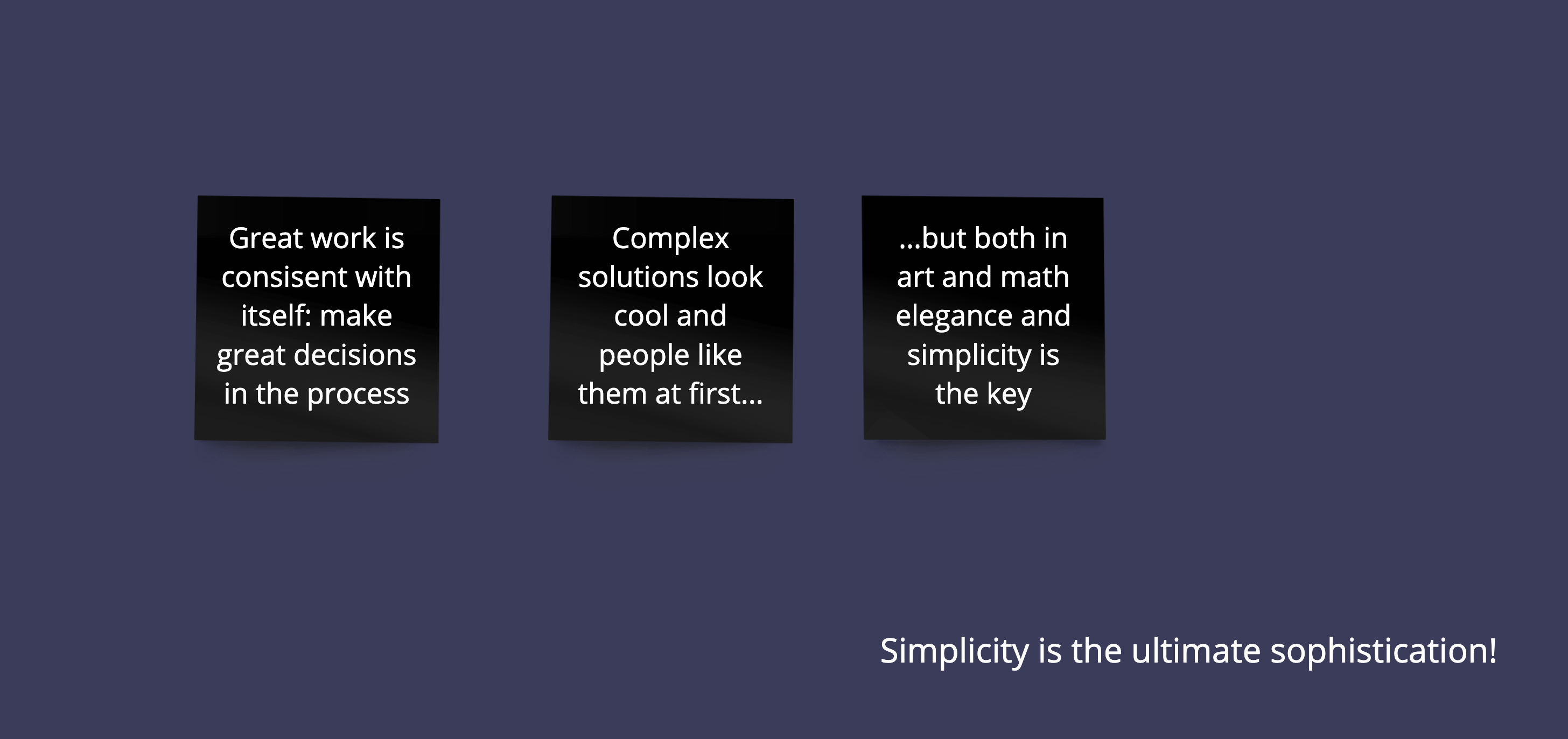
In this first part of my attempt to map the “How to do great work” article by Paul Graham, I covered two big pieces – How to choose a field and progress in it, and the Habits of great work.
\ In the second part, I will share my findings on Getting ideas, Working on ideas, and the last few paragraphs that I call Life advice. Found this helpful? Drop a comment, and pass it along to anyone you think could use it!
- Home
- About Us
- Write For Us / Submit Content
- Advertising And Affiliates
- Feeds And Syndication
- Contact Us
- Login
- Privacy
All Rights Reserved. Copyright , Central Coast Communications, Inc.